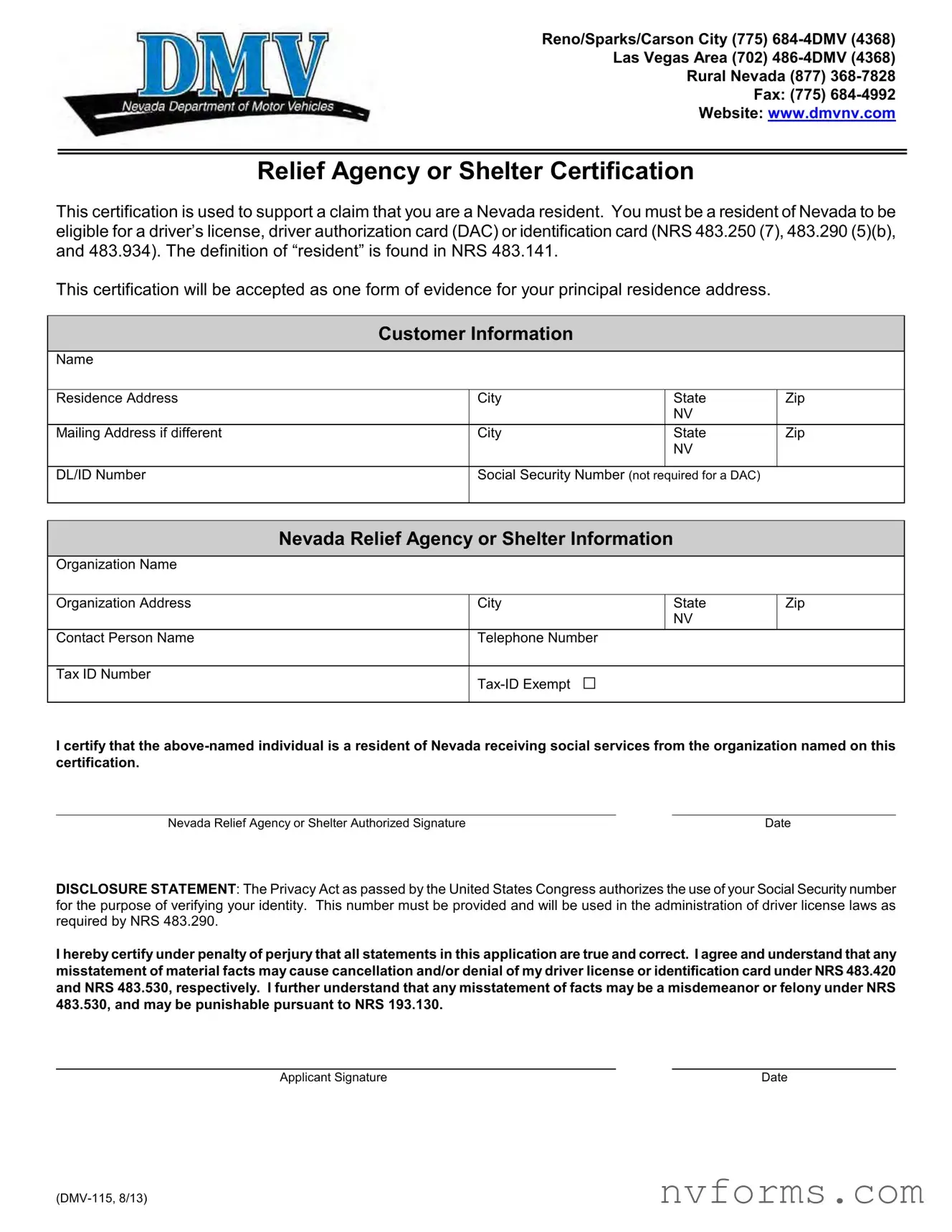Reno/Sparks/Carson City (775) 684-4DMV (4368)
Las Vegas Area (702) 486-4DMV (4368)
Rural Nevada (877) 368-7828
Fax: (775) 684-4992
Website: www.dmvnv.com
Relief Agency or Shelter Certification
This certification is used to support a claim that you are a Nevada resident. You must be a resident of Nevada to be eligible for a driver’s license, driver authorization card (DAC) or identification card (NRS 483.250 (7), 483.290 (5)(b), and 483.934). The definition of “resident” is found in NRS 483.141.
This certification will be accepted as one form of evidence for your principal residence address.
Customer Information
Name
Residence Address |
City |
State |
Zip |
|
|
NV |
|
Mailing Address if different |
City |
State |
Zip |
|
|
NV |
|
|
|
|
|
DL/ID Number |
Social Security Number (not required for a DAC) |
|
|
|
|
|
|
|
|
|
Nevada Relief Agency or Shelter Information
Organization Name
Organization Address |
City |
State |
Zip |
|
|
NV |
|
Contact Person Name |
Telephone Number |
|
|
|
|
|
|
Tax ID Number |
Tax-ID Exempt □ |
|
|
|
|
|
|
|
|
|
I certify that the above-named individual is a resident of Nevada receiving social services from the organization named on this certification.
Nevada Relief Agency or Shelter Authorized Signature |
Date |
DISCLOSURE STATEMENT: The Privacy Act as passed by the United States Congress authorizes the use of your Social Security number for the purpose of verifying your identity. This number must be provided and will be used in the administration of driver license laws as required by NRS 483.290.
I hereby certify under penalty of perjury that all statements in this application are true and correct. I agree and understand that any misstatement of material facts may cause cancellation and/or denial of my driver license or identification card under NRS 483.420 and NRS 483.530, respectively. I further understand that any misstatement of facts may be a misdemeanor or felony under NRS 483.530, and may be punishable pursuant to NRS 193.130.
(DMV-115, 8/13)

